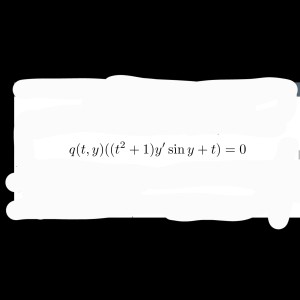ODE pls help solve
Find a factor Q(t,y) that makes this equation exact, please include some steps
Answer
Answers can only be viewed under the following conditions:
- The questioner was satisfied with and accepted the answer, or
- The answer was evaluated as being 100% correct by the judge.
 Dynkin
Dynkin
779
The answer is accepted.
Join Matchmaticians Affiliate Marketing
Program to earn up to a 50% commission on every question that your affiliated users ask or answer.
- answered
- 1122 views
- $3.00
Related Questions
- Differential equations 2 questions with multiple parts
- Find solutions to the Riemann Problems
- Solve the Riemann Problem
- 2nd Order ODE IVP non homogeneous
- Calculus - 2nd order differential equations and partial derivatives
- The domain of a solution and stability of solutions of a differential equation.
- System of linear differential equations
- Variation of Parameter for Variable Coefficient Equation


Low bounty!